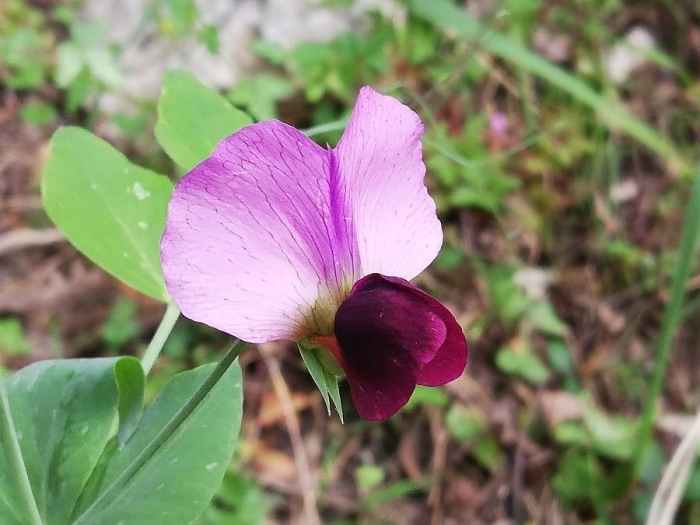Garden Pea
(Lathyrus oleraceus)
Garden Pea (Lathyrus oleraceus)
/
/

Pep Cantó
CC BY-SA 4.0
Image By:
Pep Cantó
Recorded By:
Copyright:
CC BY-SA 4.0
Copyright Notice:
Photo by: Pep Cantó | License Type: CC BY-SA 4.0 | License URL: https://creativecommons.org/licenses/by-sa/4.0/ | Attribution: Pep Cantó (cc-by-sa) | Rights Holder: Pep Cantó | Publisher: PlantNet | Date Created: 2019-05-18T19:09:45Z | Title: Pisum sativum L.: flower | Notes: Allium cepa L.: leaf |



















































Estimated Native Range
Summary
Lathyrus oleraceus, commonly known as Garden Pea, is an annual herbaceous vine native to a range of habitats including open woodlands and agricultural areas from the Mediterranean to Afghanistan. It typically grows to a height of 1 to 2 meters (3 ft 3 in to 6 ft 7 in), with climbing tendrils that support its upward growth. The plant produces white to purple flowers, followed by pods containing several peas, which can be green or yellow. The pods are botanically considered fruit since they contain seeds and develop from the ovary of a pea flower. Garden Peas are known for their edible seeds and are a cool-season crop, with a life cycle of one year.
Garden Peas are valued for their edible pods and seeds, which are a staple in culinary uses worldwide. They are also appreciated for their nitrogen-fixing abilities, which can improve soil fertility. In cultivation, they are often used in vegetable gardens and can be supported by trellises or other structures. They prefer full sun but can tolerate part shade, require medium amounts of water, and thrive in well-drained soils. While generally easy to maintain, they can be susceptible to pests like aphids and diseases such as powdery mildew.CC BY-SA 4.0
Garden Peas are valued for their edible pods and seeds, which are a staple in culinary uses worldwide. They are also appreciated for their nitrogen-fixing abilities, which can improve soil fertility. In cultivation, they are often used in vegetable gardens and can be supported by trellises or other structures. They prefer full sun but can tolerate part shade, require medium amounts of water, and thrive in well-drained soils. While generally easy to maintain, they can be susceptible to pests like aphids and diseases such as powdery mildew.CC BY-SA 4.0
Plant Description
- Plant Type: Vine, Herb
- Height: 1-1.5 feet
- Width: 0.6-1 feet
- Growth Rate: Rapid
- Flower Color: Pink, Purple, White
- Flowering Season: Spring
- Leaf Retention:
Growth Requirements
- Sun: Full Sun
- Water: Medium
- Drainage: Slow, Medium
Common Uses
Bee Garden, Bird Garden, Butterfly Garden, Edible*Disclaimer: Easyscape's listed plant edibility is for informational use. Always verify the safety and proper identification of any plant before consumption., Erosion Control, Potted Plant, Showy Flowers
Natural Habitat
Open woodlands and agricultural areas from the Mediterranean to Afghanistan
Other Names
Common Names: Pea
Scientific Names: , Pisum sativum, Lathyrus oleraceus, Pisum sativum subsp. tibetanicum, Pisum vulgare, Pisum arvense var. album, Pisum commune subsp. sativum, Pisum sativum subsp. pumilo, Pisum sativum var. elatior,
GBIF Accepted Name: Lathyrus oleraceus Lam.